Workplace Safety and Health
HIWIN is committed to ensuring the physical and mental well-being of both employees and contractors through comprehensive safety and health management. In addition to adhering to legal regulations, the Company also promotes safety awareness among employees and implements various healthcare measures. Its goal is to create a secure and healthy work environment, prevent occupational accidents and illnesses, and establish a comprehensive Safety and Health Mutual Protection Circle. In terms of comprehensive corporate sustainability performance, HIWIN has incorporated occupational safety topics into its goal-setting process. Short-, medium-, and long-term targets for occupational injury prevention have been established and integrated into the development objectives of the management manual.
Promotion of Safety Culture
In 2017, under the leadership of President Enid H.C. Tsai, HIWIN initiated a company-wide safety culture campaign, with department heads jointly endorsing the initiative. The campaign encouraged all employees to actively participate in hazard identification, incident reporting, and continuous improvement through innovative solutions. Furthermore, the Company implemented a rewards system to foster a safety and health mindset as an integral part of every employee’s DNA. HIWIN’s safety culture encompasses three key dimensions: policy, management, and individual aspects.
In 2024, every department conducted self-assessments and discovered a total of 549 hazards factors through independent inspections and regional activities, and 1,381 potential risks were discovered during regional joint prevention activities were identified and addressed. Beginning in 2022, a quarterly analysis of weaknesses in safety culture promotion across different processes has been implemented. This includes the planning of relevant educational training, which has effectively improved the effectiveness and results of safety culture promotion.
2024 Achievements in promoting safety culture
2024 Occupational health and safety performance indicators
HIWIN employs a four-level indicator system (Safe, Caution, Careful, Dangerous) to assess Occupational Health and Safety performance. This system incorporates both proactiveNote1 and reactiveNote2 indicators within the framework of our safety culture. To create a safe and friendly working environment where employees can work with peace of mind, we focused on analyzing weaker departments with lower performance scores in 2024. Through targeted training and on-site audit guidance, we effectively reduced the proportion of departments falling under the “Dangerous” and “Careful” categories. These two categories accounted for only 4.8%.
Note: 1. Proactive Indicators: Encourage employees to actively participate in safety and health activities and offer suggestions to improve safety.
2. Reactive Indicators: Include the number of occupational injuries, incidents, and participation rates in environmental.
To enable employees to learn from the safety performance and practices of units with outstanding safety culture, HIWIN promoted safety culture activities in 2023 through the execution of four evaluation criteria:
Occupational Health and Safety
HIWIN adheres to the ISO 45001:2018 Occupational Health and Safety Management System standards, which were issued in March 2018. By utilizing the PDCA framework, HIWIN has made modifications to the existing OHSAS 18001 regulations. These modifications include expanding the standard to involve support and participation from leadership levels, as well as the collection and planning of internal and external issues. Additionally, HIWIN addresses stakeholder needs and expectations, identifies and assesses risks, consults and communicates with nonmanagement personnel, applies performance indicators, and evaluates the effectiveness of corrective and preventive measures. Safety concerns and improvement opportunities are identified through mechanisms such as management reviews, internal audits, automatic inspections, and safety and health inspections. This ensures that the principles of the system are effectively implemented at the management level.
Furthermore, HIWIN recognizes its employees as a crucial core competency and is dedicated to enhancing their knowledge, attitudes, and qualities regarding safety and health. In 2019, HIWIN became the first domestic precision machinery manufacturer to receive ISO 45001:2018 certification. HIWIN consistently maintains this certification on an annual basis, covering all employees and contractors. In 2024, HIWIN Headquarters, Jingke Factory, Factory 2, Yunlin Factory 1, Yunlin Factory 3, and Dapumei Factory 1 also obtained CNS 45001:2018 certification, earning the “Taiwan Occupational Safety and Health Management System” (TOSHMS) certificate.
Note: 1. ISO 45001:2018 certification has been successfully obtained for the Headquarters, Jingke Factory, Factory 2, Yunlin Factory 1, Yunlin Factory 2, Yunlin Factory 3, Dapumei Factory 1, Dapumei Factory 3.
2. In response to the scheduled launch of Factory 1 in 2025, HIWIN plans to undergo external ISO 45001 certification in 2026.
Workers covered by the Occupational Health and Safety Management System
As of the end of 2024, the workforce at HIWIN can be categorized as follows: employees (4,651 individuals, 82.3%), contractors (960 individuals, 16.9%), outsourced cleaning staff (34 individuals, 0.6%), outsourced security personnel (9 individuals, 0.2%).
Efficacy & outcomes of internal audits
To ensure that all operational procedures are implemented in accordance with relevant regulations and aligned with the ISO 45001:2018 management system, HIWIN conducts more than two internal audits each year. In 2024, a total of 1,721 items were audited, including 1,654 compliant items, 10 non-conformities, and 57 system improvement suggestions. Upon further analysis, the non-compliance items and recommendations were primarily related to document management, chemical safety, and fire emergency management. In compliance with audit regulations, these issues were resolved within one month with a 100% improvement rate.
To maintain safety and health in operational sites, routine Safety and Health Inspections and Dynamic Inspections are consistently held across all HIWIN factories to identify unsafe behaviors, environments, and equipment; ensure ongoing safety and health improvements in each factory; prevent occupational accidents; and protect the safety and health of our workplaces and workers.
Additionally, all HIWIN factories are required to undergo quarterly Senior Management Inspections, where senior management from each site conduct safety and health inspections with personnel of all levels, demonstrating a commitment to safety culture and ensuring operational safety and health at all levels.
In 2024, a total of 541 deficiencies were identified through safety and health inspections and dynamic inspections. The top three categories of non-conformities were: operational management (28.3%), chemical management (22.9%), and electrical safety (13.3%). All factories are required to confirm and rectify any similar deficiencies uncovered in internal inspections and implement on-site management, personnel safety and health training, improvement suggestions, and safety culture activities to embed safety and health awareness across all organizational levels and thereby reduce the likelihood of recurring deficiencies. By the end of 2024, all 617 deficiencies identified in internal audits had been successfully resolved and tracked.
Participation, consultation, and communication on occupational health and safety issues
HIWIN has established Occupational Health and Safety Committees at each operational location to create a comfortable and safe environment and facilitate communication between labor and management. The committees consist of supervisors from various levels, safety personnel, and labor representatives, with a total of 300 members. Of these members, 114 are labor representatives, accounting for 38% of the total. Regular quarterly meetings are held to collectively provide input on the Company’s safety and health policies, as well as to review, coordinate, and advise on safety and health-related matters. Simultaneously, quarterly meetings are held to make collective decisions on the planning and operation of the safety and health system. To further enhance communication, HIWIN has also set up a Safety and Health Consultation Mailbox and conducts occasional electronic surveys to collect employee feedback.
Hazard Identification, Risk Assessment, and Accident Investigation
HIWIN has implemented protocols for identifying hazards, assessing risks, and evaluating opportunities. A thorough hazard identification is conducted for both routine and non-routine activities, with regular reviews and revisions conducted annually. Prior to making any changes to processes, equipment, raw materials, or work environments, hazard identification is performed, taking into account chemical, physical, human factors engineering, biological, and other hazards. Personnel responsible for conducting hazard identification, risk assessment, and opportunity evaluation are required to undergo a minimum of two hours of training in risk assessment. Enhancing hazard identification capabilities to reduce operational risks.
All HIWIN units classify operational activities, environmental equipment, or manufacturing processes and conduct job and task audits based on potential hazards. In alignment with each unit’s operational procedures, every operational step is documented in the Hazard Identification, Risk Assessment, and Opportunity Evaluation Form. Hazards are then ranked according to severity and likelihood, with risk levels determined using the Safety Risk Assessment Matrix. Targeted improvement plans are implemented for high-risk hazards identified in the year as a way to continually reduce operational risks, ensure a safe working environment for workers, and minimize the likelihood of occupational disasters.

In 2024, each factory has completed various operational risk and opportunity assessments. The 20 operations with moderate risks listed as “unacceptable risks,” and risk control measures have been implemented. 20 of them have also been listed in the 2025 target management plan. For the highest proportion of “human hazards” operational risks, the main improvement measures are to replace improper actions and force with labor-saving tools and changes in related mechanisms.
The Safety and Health Work Guidelines, as well as the Contractor Safety and Health Management Manual, clearly state that “Employees (contractors) who encounter an immediate danger have the right to retreat. They may stop work and retreat to a safe place without endangering the safety of other workers. They must promptly report to their immediate supervisor (or the supervising unit) and are not subject to dismissal, reassignment, withholding of wages during the stoppage period, or any other disadvantageous actions.” to protect the rights and interests of workers.
Hazardous chemical management and operation environment monitoring
Hazardous chemicals used in various stages of each plant’s processes are stored in designated areas and managed accordingly. The storage locations and containers are labeled in accordance with the Hazardous Chemical Labeling and Communication Rules and the GHS (Globally Harmonized System of Classification and Labelling of Chemicals) Regulations. Safety Data Sheets (SDS) are also placed in visible areas for easy access by operating personnel, enabling them to review them at any time and implement relevant emergency response measures. We also developed Hazard Identification Cards (H-Cards) for chemicals used throughout factories to help identify the storage locations of chemicals, providing crucial information during disaster response and preventing further risks as emergency procedures are activated. HIWIN also adheres to the Implementation Measures for Occupational Work Environment Monitoring and contracts qualified agencies to conduct regular operational environment monitoring every six months. In 2024, the monitoring covered 65 items, including noise, CO2, dust, comprehensive temperature heat index, oil mist, xylene, and ethanol. A total of 1,970 monitoring points were inspected (covering both areas and personnel). Of these, 14 noise points, and 9 comprehensive temperature heat index points exceeded permissible standards, and improvements were made through engineering adjustments, administrative management, or the use of protective equipment.

Contractor Occupational Health and Safety
HIWIN holds an annual meeting for contractor coordination meetings to promote, consult, and communicate occupational health and safety regulations. In 2024, a total of 195 contractors participated. Before contractors enter HIWIN factories, they undergo contractor safety training and testing. In addition to occupational safety and health personnel auditing the safety of contractor operations, HIWIN has implemented measures to enhance safety management, encouraging all employees to actively participate in safety oversight and immediately uncover and eliminate any safety risks. Employees that identify a safety hazard in contractor operations can report it to the Occupational Safety and Health Department and the contractor management unit. In 2024, audits of contractor operational safety identified 37 potential hazards, which were mainly in the categories of Operational Management (54%) and Working at height (22%). Contractors were required to address and correct these hazards within a specified timeframe.
To enhance the effectiveness of contractor occupational safety and health (OSH) management, HIWIN implemented several optimization initiatives in 2024. These efforts focused on strengthening each stage of contractor site access management and communication quality through the development of digital systems, reinforcement of training resources, and integration of information. Key measures include:
Occupational Accident Improvement
To effectively eliminate workplace accidents, in addition to promoting a strong safety culture, HIWIN developed 41 safety objective management plans in 2024 and continued to advance safety-related projects to enhance operational safety. A structured training roadmap for occupational safety and health courses was also implemented to cultivate safety leadership among newly promoted supervisors.
In terms of accident improvement and prevention, HIWIN introduced the “Safety Moment” initiative to share insights and preventive strategies related to occupational safety and health, often inspired by industry trends or news events. These sessions aim to encourage self-reflection among employees and foster peer-to-peer advocacy, thereby deepening safety and health awareness across the organization.
In 2024, HIWIN’s facilities rolled out micro-learning modules under the “Safety Moment” initiative. Each session, lasting 3-5 minutes, focused on key aspects such as on-site hazard control, prevention of various hazard types, case studies of incidents, and comparisons between safe and unsafe operational practices. These concise sessions helped employees better understand root causes of hazards and contributed to minimizing occupational incident rates.
In the event of an occupational accident, it will be evaluated using the PDCA (Plan-Do-Check-Act) management system approach. Source control measures will be implemented, and immediate actions for improvement will be taken to prevent similar issues from recurring. No significant penalties related to occupational safety were incurred in 2024.
To ensure the safety and health of workers, HIWIN conducts safety audits on all procurement items before raw materials are stocked. In accordance with relevant occupational safety and health regulations and risk assessment methods, HIWIN has established 116,552 procurement material codes, categorized into five major groups: engineering, general goods, production machinery, non-production machinery, and others. Additionally, HIWIN has formulated the Environmental, Safety, Health, and Energy Equipment Procurement Specification, which is incorporated into procurement contract reviews as an acceptance standard. This specification is regularly reviewed and updated based on occupational accident case studies in order to strengthen the prevention of occupational risks and ensure the safety and health of workers.
In 2024, a total of 31 occupational accidents occurred (excluding commuting traffic accidents). Statistical analysis showed that the most frequent types of incidents involved punctures, cuts, abrasions, falling objects, and being caught or entangled. Through the continued promotion of safety culture, on-site hazard mitigation, dynamic (CCTV) inspections, customized safety operation standards, and occupational safety and health performance enhancement projects within the manufacturing departments, the Disabling Injury Frequency Rate (F.R.) in 2024 decreased by 52% compared to 2023. As part of the Company’s comprehensive injury prevention efforts, we continued to promote a safety awareness and strengthen proactive safety protection measures to achieve the goal of reducing occupational incidents year by year.
Regarding contractor operations, due to the ongoing implementation of strict construction safety controls and supervision systems, there were no cases of minor or disabling injuries reported in 2024.
In order to consistently improve employee operational safety, HIWIN has been collecting historical data on occupational hazards. As a result, we are developing initiatives to enhance workplace safety, which include:
• Reducing disabling injury frequency rate (F.R.) and disabling injury severity rate (S.R.): Implement safety culture projects, conduct safety knowledge and skills certification programs, and compile a risk map to reduce risks of relevant occupational disasters.
• Supporting underperforming units through cross and dynamic inspections, providing guidance on addressing deficiencies, and offering quarterly educational training.
• Conducting internal and cross-audits spotlighting key regulations, increasing the completion rate and depth of regulation identification, reducing the risk of violations, and improving regulatory compliance.
Voluntary reporting of near miss incidents
HIWIN has implemented a standard operating procedure to address near miss incidents. This procedure allows all employees to proactively report such incidents and provide specific improvement suggestions through an online system. When a near miss occurs, the responsible units are promptly notified to confirm and conduct an investigation. Immediate measures are taken to prevent the incident from escalating. We continuously strive to enhance workplace safety through initiatives such as environmental optimization, safety promotion, and regular inspection of protective equipment. Near miss incidents are considered as indicators of our occupational health and safety performance and are integrated into our assessment and rewards mechanism. In 2024, a total of 7 near miss incidents were reported, resulting in a near miss incident rate of 0.01Note.
Note: Near miss incident rate = (Number of near miss incidents × 200,000) ÷ Total work hours.
The primary types of near miss incidents were collapses/falls and cut/laceration/abrasion hazards, each accounting for 29% of the total. To mitigate the risks associated with collapses and falls, reinforcement and securing of structures were prioritized. As for cut, laceration, and abrasion-related near misses, isolating points of contact with hazardous components was implemented to prevent potential occupational injuries.
Safety and health education and training
Each year, HIWIN develops a safety and health education and training plan to enhance employees’ knowledge and skills in these areas.
To ensure that contractors are well-versed in occupational safety and health before entering factories and that related workers’ health and safety are protected, HIWIN has strengthened hazard notification training for contractors since 2021. HIWIN has developed training materials and provided access to the Ministry of Labor’s Online Occupational Safety and Health Digital Learning Platform, empowering contractors to conduct internal training. After completing the course and passing the contractor’s exam, participants receive an entry certification. By the end of Dec. 2024, a total of 960 individuals had completed this training.
The primary types of near-miss incidents were collapses/falls and cut/laceration/abrasion hazards, each accounting for 29% of the total. To mitigate the risks associated with collapses and falls, reinforcement and securing of structures were prioritized. As for cut, laceration, and abrasionrelated near misses, isolating points of contact with hazardous components was implemented to prevent potential occupational injuries.
Emergency response drills
In addition to regular safety and health education training, HIWIN conducts annual emergency response drills. These drills are based on current events, occupational hazard scenarios, and the results of hazard identification, risk assessment, and opportunities evaluation for issues categorized as moderate risk and above. The purpose of these drills is to educate personnel on activating emergency response mechanisms, reporting to relevant individuals, evacuating to safe zones in potentially harmful or hazardous situations, and reviewing process details and protocols with colleagues after the drill. Contractors are also invited to participate in these drills and are provided with information about potential hazards upon entry. If there is an immediate danger, contractors are allowed to cease their operations and move to a safe location without endangering other workers.

Oil Tank Leak Emergency Drill

Fire Emergency Response Drill

Chemical Spill Response Drill
Health-Friendly Workplace
HIWIN prioritizes the overall growth of its employees, focusing on their physical and mental well-being. To accomplish this, HIWIN follows a thorough five-step health management approach. This approach encourages employees to adopt proactive health habits, improves their performance at work, and collaborates with them to create a workplace environment that promotes good health.
Workplace health management
HIWIN employs a comprehensive management approach to employee care, focusing from three key perspectives: “Occupational Injury and Illness Prevention, Healthcare, and Health Promotion.” and five major steps: “Diagnosis, Plan, Implementation, Evaluation,” systematically manage employees of all categories and protect employee health.
Occupational injury and illness prevention
To prevent occupational injuries and diseases, HIWIN is targeting five hazards, related actions are as follows in 2024:
Health risk assessment map
To effectively implement workplace health management, we prioritize specific groups. We accomplish this through the use of questionnaires or assessment analyses, considering the relevance to job responsibilities and the impact on company operations. Health Risk Assessment Map is as follows.
According to the 2024 Health Risk Map, work-related health risks are primarily concentrated in general health examinations, particularly among employees aged 45 and above. Health management challenges in this demographic are moderately associated with job functions and pose a relatively significant impact on business operations.
Comprehensive analysis indicates that most employees work on a rotating shift basis and have dietary habits leaning toward eating out. As a result, chronic diseases are often detected during routine health checkups. With advancing age, the physiological functions of workers over 45 years old gradually decline. If chronic diseases are also present, their work performance may be affected, further elevating operational risks for the company.
Healthcare
HIWIN implements a variety of health examination programs, including regular employee health checks and specialized assessments for tasks involving specific hazards, on an annual basis. In compliance with regulations, HIWIN organizes occupational health consultations and offers health education guidance through occupational health physicians and nurses.
• Conducting employee health checkups based on age and years of service, going beyond legally required frequency. Completion rate: 100%
• Special health examinations are conducted for employees working in environments with health hazard factors (e.g., dust, specific chemical substances) Completion rate: 100%
• To facilitate employees’ understanding of their health status, optional self-paid cancer marker tests (e.g., CA-153, CA-125, CA-199, CEA) are offered for blood screening based on individual needs.
• Offering monthly consultations for employees on illnesses, return-to-work assessments, and health check results.
• Medical information services are made available to assist employees in resolving health-related concerns.
• Recovery status of occupational injury cases is regularly followed up. Psychological and physical impact assessments are conducted, and Employee Assistance Program (EAP) support is arranged if necessary.
• Basic medical services such as simple wound care and vital sign monitoring are offered to support employees’ immediate health needs.

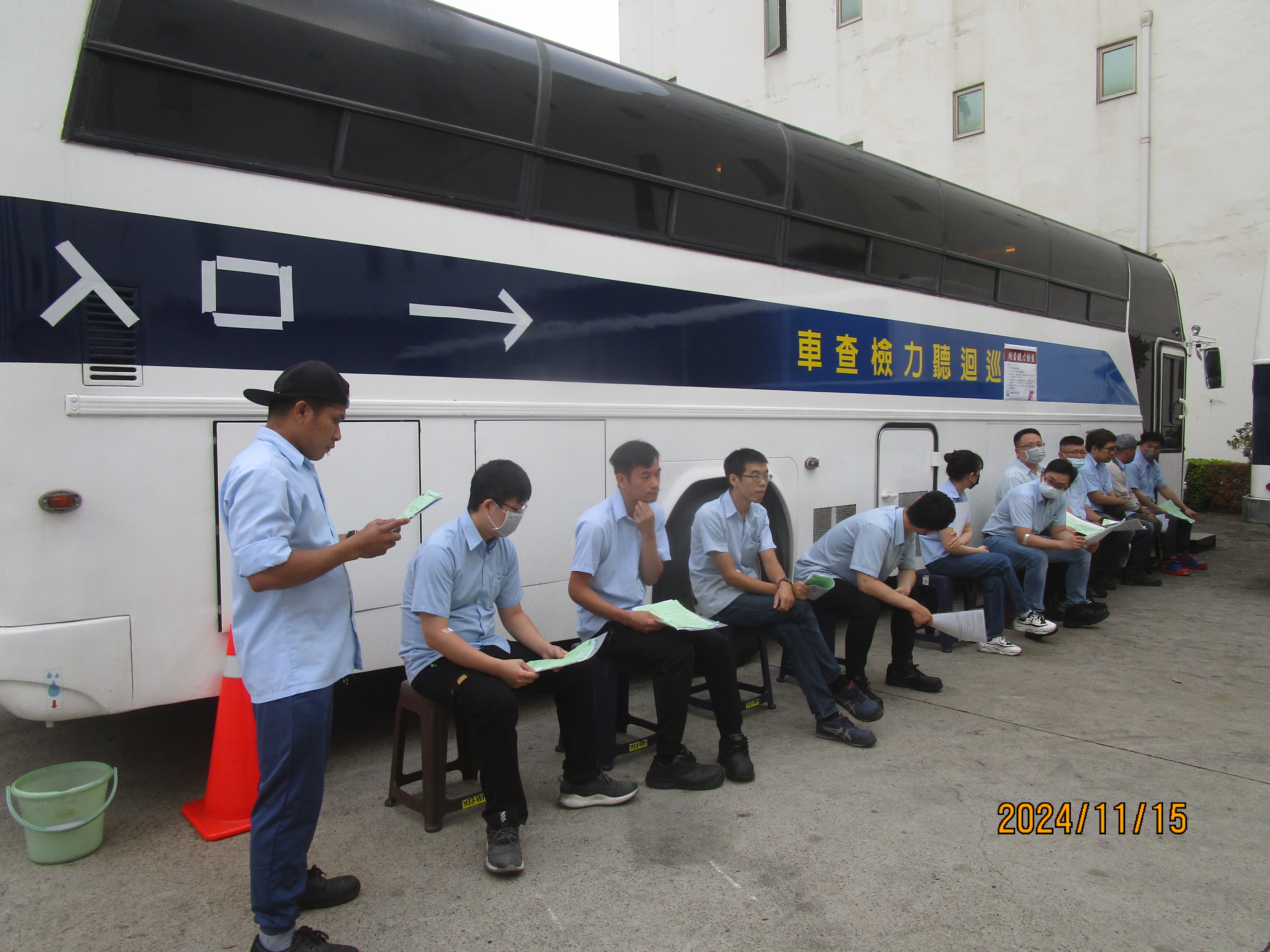
2024 Health check
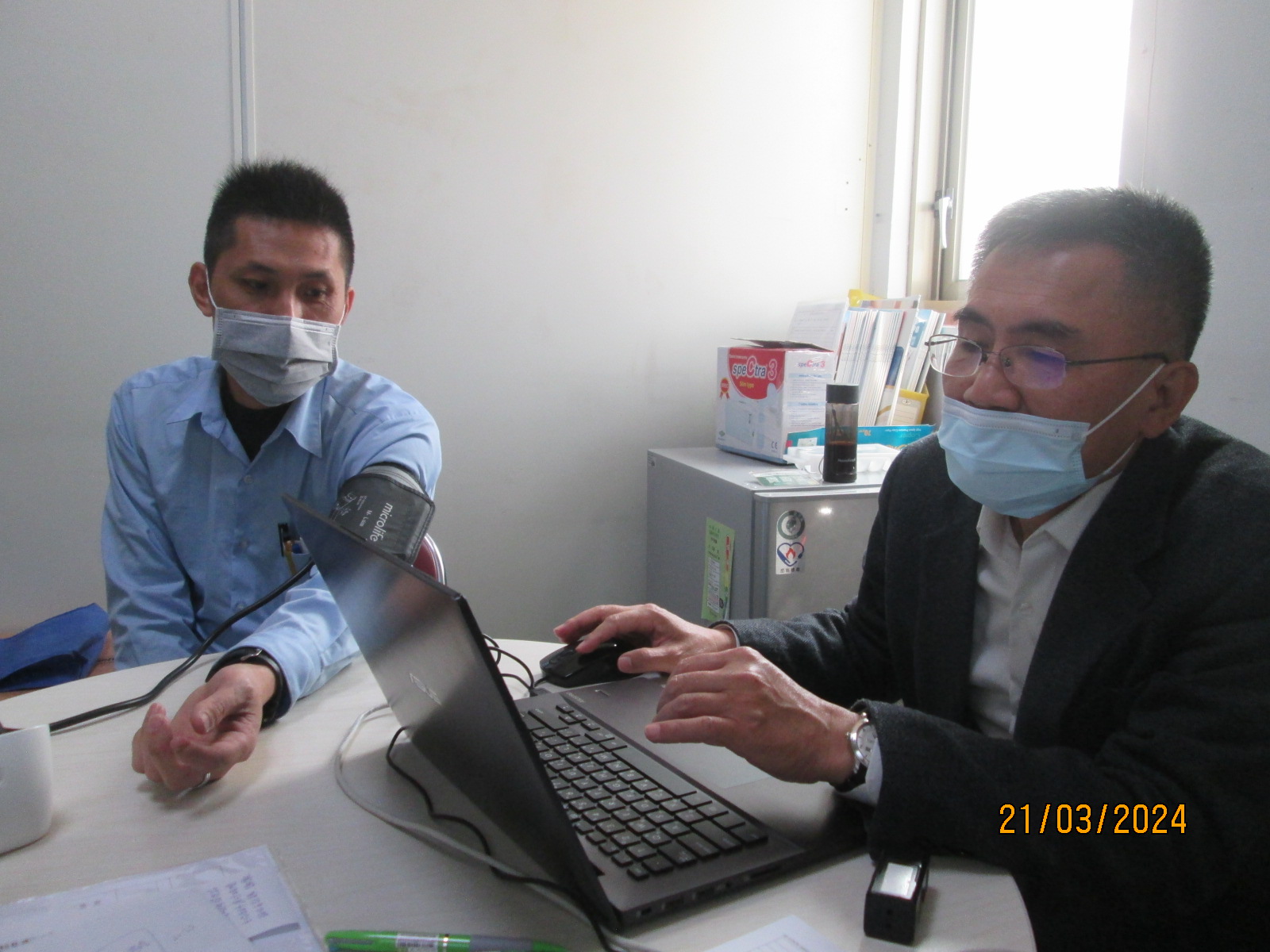
Occupational physician consultation
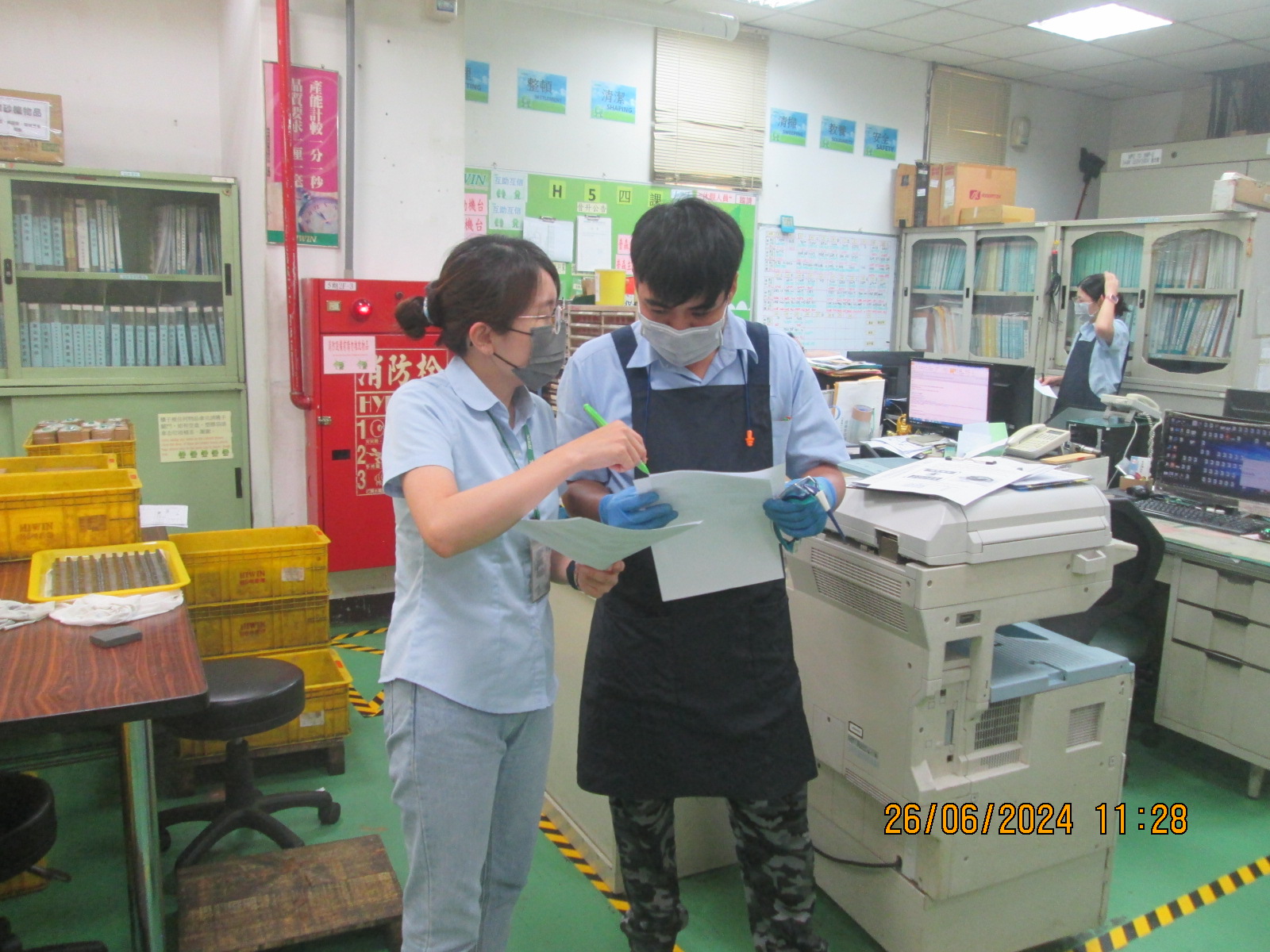
Nurse consultation & follow-up
Health promotion
AED devices have been installed in all factory sites and employee dormitories. From 2023 to 2024, a total of 3,443 participants completed CPR+AED training, and 32 certified AED administrators were trained to strengthen emergency response and equipment management capabilities on site. As of the end of 2024, all factory sites have been certified as “Safe Places.”

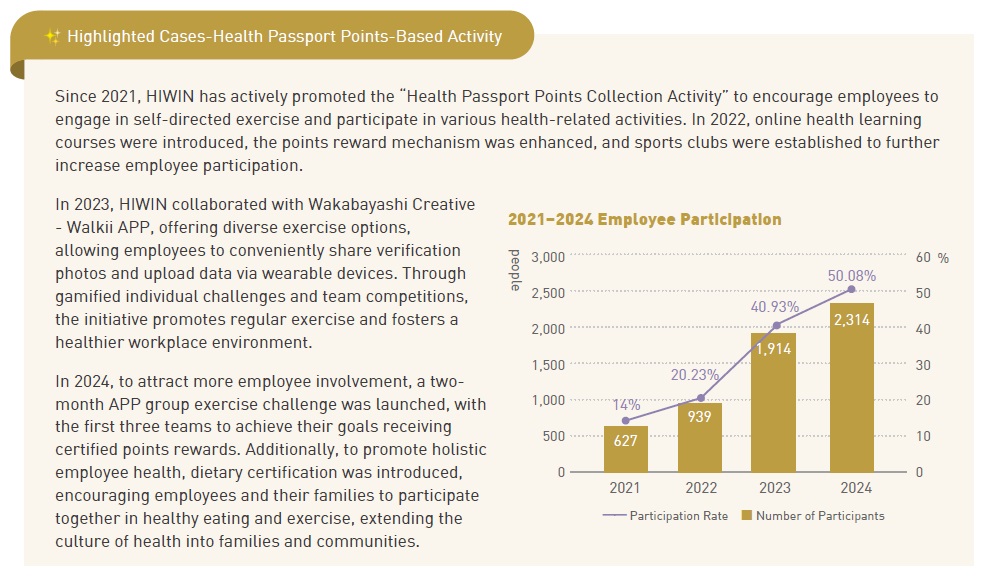
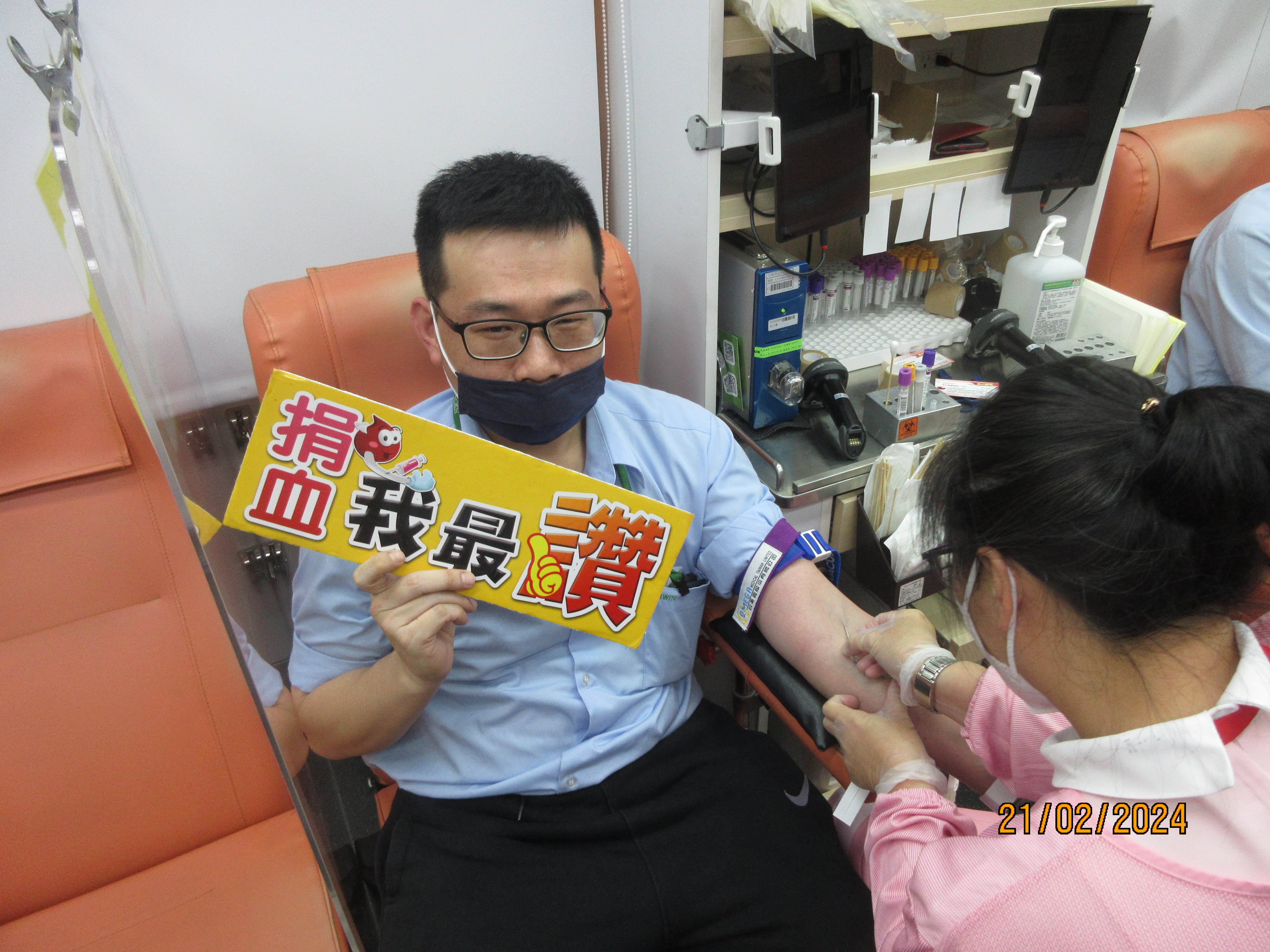
Blood donation campaign
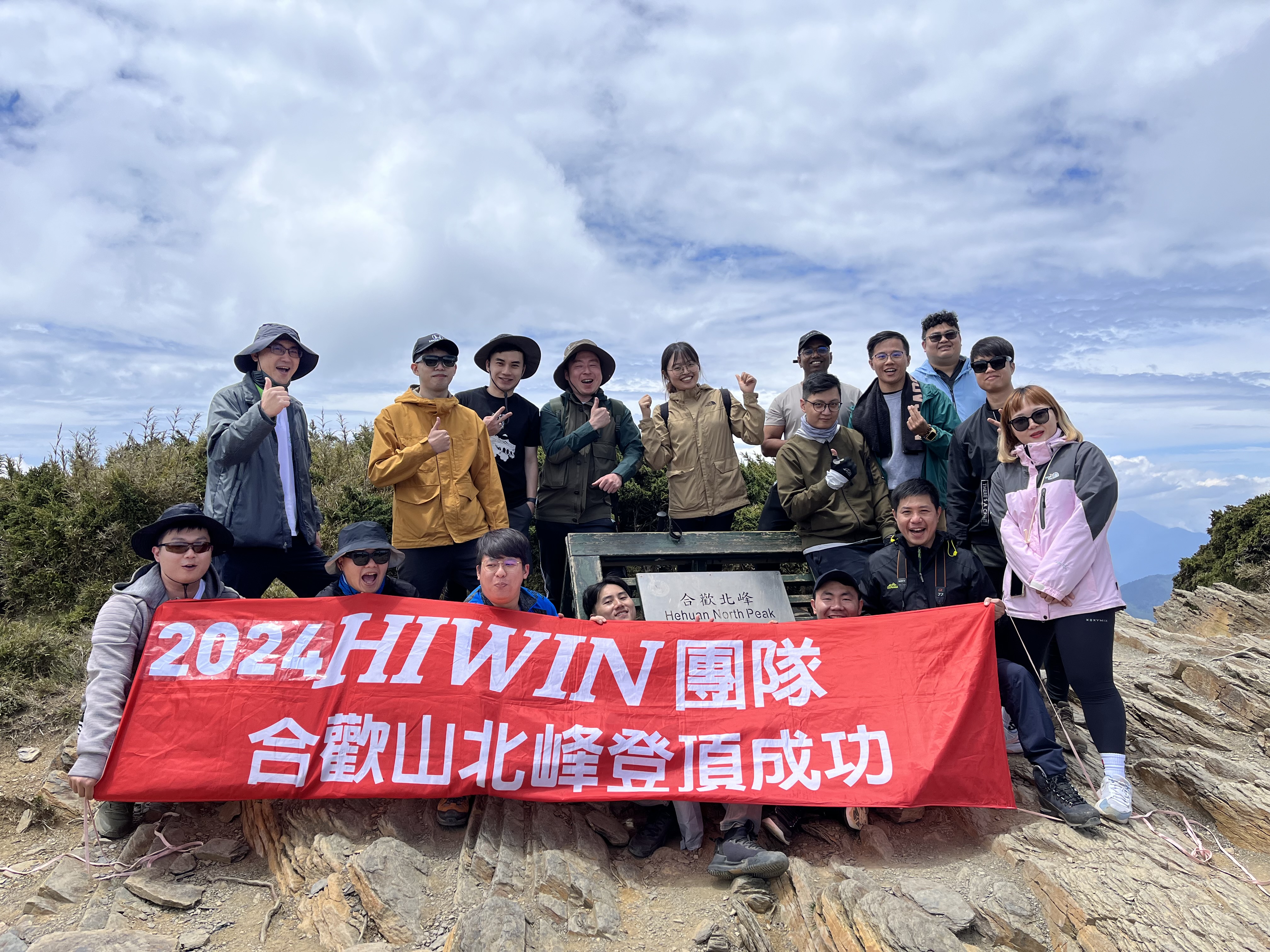
Successfully climbed the Hehuan north peak

Taipei 101 Run Up

Successfully climbed the Yushan main peak

Children’s health campaign
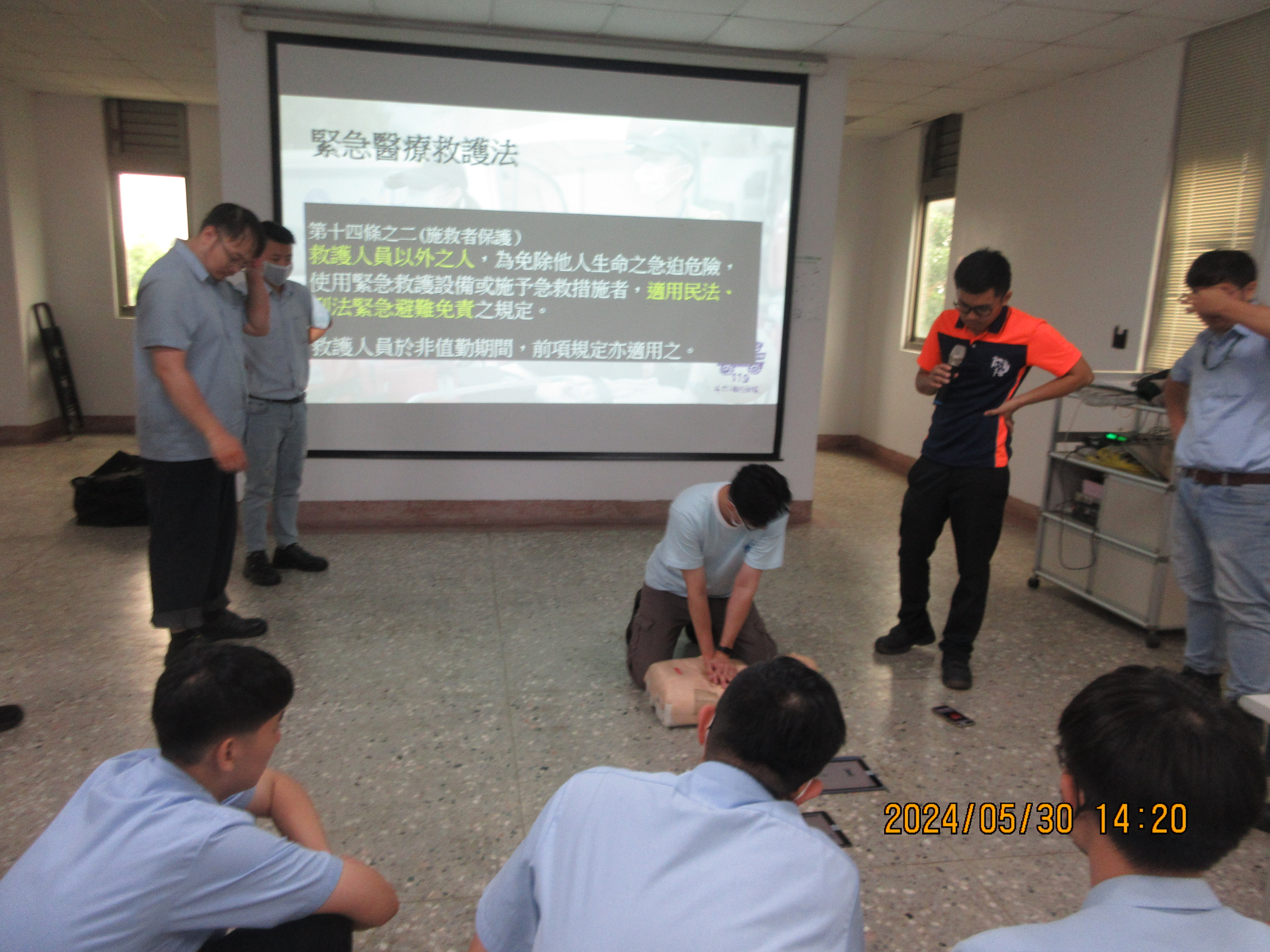
CPR+AED training